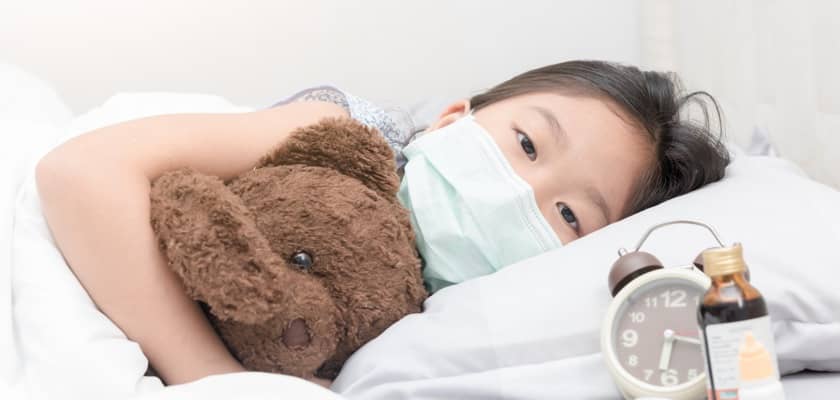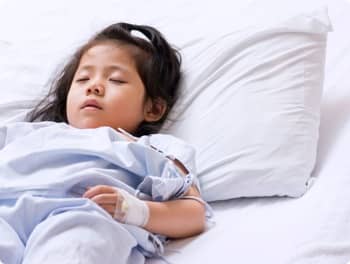About Childhood Cancer

Common Presenting Symptoms & Signs
If you or your families have the following situations, we suggest that you seek help by a pediatric oncologist as soon as possible:
Unexplained, severe pain
Lump in the body or limbs
Unexplained paleness and loss of energy (anemia)
Limping
Sudden eye or vision changes
- Unexplained lymph node enlargement
- Unexplained fever for > 1 week
- Easy bruising
- Frequent headaches, often with vomiting
- Abnormal white reflection from eye
When to See a Pediatric Oncologist?
Pediatric Oncologists are specialists taking care of children with cancers, brain tumors and leukemia. We recommend that the child be seen by a Pediatric Oncologist
when a child shows any common presenting symptom or sign of cancer, or
when anytime there is a concern that there may be a cancer, brain tumor or leukemia in a child
What is Childhood Cancer?
Cancer is a group of diseases involving abnormal cell growth with the potential to invade or spread to other parts of the body. Childhood cancers, also called pediatric cancers, are cancers diagnosed in children and adolescents. In Taiwan, more than 500 children are diagnosed with cancer each year.
Cancers in children are different with those occurring in adults. Childhood cancer is also the most common cause of death due to disease in children.
In Taiwan, the top 10 cancer types in children are:
Leukemias
Lymphomas
Neuroblastoma
Thyroid cancer and other carcinomas
- Liver tumors (Hepatoblastoma)
Brain tumors
Germ cell tumors
Soft tissue sarcomas
Bone tumors
Retinoblastoma
How are children’s tumors treated?
Through modern treatment and care, more than 80% of children with cancer can be cured today. In Taipei Cancer Center, we provide high-quality team care through our Featured Programs. To find the best therapy for children with cancer, we use histology and molecular-driven strategies to give personalized, risk-adapted treatment in a multidisciplinary way.
Effective treatment for childhood cancers usually require a combination of treatment modalities as follow.
Surgery:
When used to treat cancer, surgery is a procedure in which a surgeon removes cancer from your body. Learn the different ways that surgery is used against cancer and what you can expect before, during, and after surgery.
Radiation therapy:
Radiation therapy is a type of cancer treatment that uses high doses of radiation to kill cancer cells and shrink tumors. Learn about the types of radiation, why side effects happen, which ones you might have, and more.
Chemotherapy:
Chemotherapy is a type of cancer treatment that uses drugs to kill cancer cells.
In addition to the traditional treatments described above, some specific cancers need to be combined with the following special therapies to improve the treatment:
Stem Cell Transplant :
Patients are required to receive high doses of Stem cell transplants are procedures that restore blood-forming stem cells in cancer patients who have had theirs destroyed by very high doses of chemotherapy or radiation therapy. Learn about the types of transplants, side effects that may occur, and how stem cell transplants are used in cancer treatment.
Immunotherapy to Treat Cancer:
Immunotherapy is a type of treatment that helps your immune system fight cancer. Get information about the types of immunotherapy and what you can expect during treatment.
Targeted Therapy :
Targeted therapy is a type of cancer treatment that targets the changes in cancer cells that help them grow, divide, and spread. Learn how targeted therapy works against cancer and about common side effects that may occur.
Precision Medicine:
Precision medicine helps doctors select treatments that are most likely to help patients based on a genetic understanding of their disease. Learn about the role precision medicine plays in cancer treatment, including how genetic changes in a person’s cancer are identified and used to select treatments.
Why do children with cancer need to be tracked for a long time?
Recently, the long-term survival rate of pediatric cancer is close to 80%, but it may still cause delayed effects or “recurrent cancer” due to side effects of tumor or treatment, which may affect long-term health. The Taipei Cancer Center focuses on the unique health needs of child patients after treatment through a long-term follow-up care team. Through multidisciplinary integration and evaluation, care and research, TCC promotes the quality of life and survival of children with cancer after treatment.

Story Sharing of Children Tumor Patients
The two-year-old boy, A, has experienced fever, loss of appetite, and pale face over the past month or so. His mother took him to a hospital in the TMU system. Boy A was very afraid of a strange environment. As soon as a stranger approached him, he began to cry, as if his body was very uncomfortable. After a detailed examination, the doctor discovered that he had severe anemia, and the abdomen was very swollen, and the posterior abdominal wall had a large tumor with a diameter of 10 cm, and some even transferred to the bone. At that time, the boy A’s medical team quickly and in-depth discussions with the Taipei Cancer Center Pediatric Oncology Team, based on the tumor site and clinical features, were considered “neuroblastoma.” The patient is scheduled to undergo surgery and subsequent chemotherapy. The boy A’s mother told the medical staff that it was a correct diagnosis. After starting treatment, the boy’s abdomen was not swollen, and his mood improved.
The three-year-old boy B has been suffered from stuffy nose for several months. At first, the doctor treated the patient as sinusitis, and the effect was not satisfactory. Later, B’s airway obstruction became severe. The doctor found that the nasopharynx deep in the back of the nose had a tumor of five centimeters, which hindered breathing. The slice at that time was diagnosed as “Rhabdomyosarcoma”. After B passed standard chemotherapy, the tumor was significantly reduced. However, due to the deep location of the tumor, it was still impossible to perform the surgery for complete resection. The medical team then recommended local radiation therapy (electrotherapy). However, parents of B are concerned about the risk of radiation therapy and consulted the Taipei Cancer Center for a second opinion.
Although children exposed to excessive radiation may affect growth and health, on the other hand, for many cancers, radiation is still the most effective weapon. Through the contact of Navigator Nurse, the TMU team judged that the case of rhabdomyosarcoma was at a high-risk site and could not be removed after chemotherapy, and should be treated with radiation. Therefore, parents of B are encouraged to aim at the cure of B’s disease completely, and to face the electrotherapy and related side effects.
Boy C, who lives in Zhonghe, grows in a single-parent family. In the last semester of his junior high school, his mother found that he seemed to be getting thinner and thinner, and he was prone to fatigue while his cold could not be cured for a long time. Under the help of social workers and the team of doctors at Shuanghe Hospital, Boy C was found to have “malignant lymphoma.” After the operation, Boy C went through a series of chemotherapy treatments, but his condition was unstable and he was once in a worse condition. Finally, the team used high-dose chemotherapy, and Boy C received an autologous hematopoietic stem cell transplant before finally relieving the disease.
Because some of the chemotherapeutic drugs are not in NHI pachage, and the cost of stem cell transplantation and postoperative isolation wards is high, C’s family suddenly faced heavy economic pressure. At that time, Dr. Chen Shuhui actively assisted and asked social workers to help raise funds. With the support of Taiwanese good-hearted people and enterprises, the “Children’s Cancer Patient Protection Project” was established. In this way, it is hoped to take care of the needs of different families, so that patients have more opportunities to choose more expensive but more effective treatment, and also let patients and their families do not give up treatment easily.
In the family’s opinion, the little boy L is a quiet and sweet child. However, before a certain time, he began to complain from time to time that the forehead would hurt. “It is like a hammer knocking.” Sometimes he even couldn’t sleep, and lost sleep until dawn. In addition to annoying headaches, he had often vomited. When the situation was serious, vomiting can occur regardless of whether or not he ate.
At first, he went to a nearby hospital for medical treatment and was diagnosed with common gastroenteritis. However, the effect was not improved after the treatment, and the pineal tumor was found after a computerized tomography scan. Finally, the parents decided to go to TMU for medical treatment. In the subsequent treatment, the boy L has undergone two long-term operations, and the tumor tissue is removed as much as possible under the premise of safety, and then he undergone follow-up radiotherapy and chemotherapy.
The Children’s Brain Tumor Team at the Taipei Cancer Center said that the cause of pineal germ cell tumors is still unknown. Recently, studies have reported that it is related to mutations such as KIT or RAS. But as long as one have the right diagnosis and multi-disciplinary team treatment plan, the effect is usually quite good. In the coming year, little boy L must undergo radiation therapy and multiple chemotherapy. Although the whole course of treatment is long and painful, the prognosis is quite good. He is confident that he can win this war.
Health info



